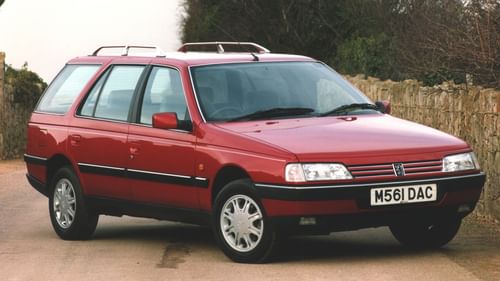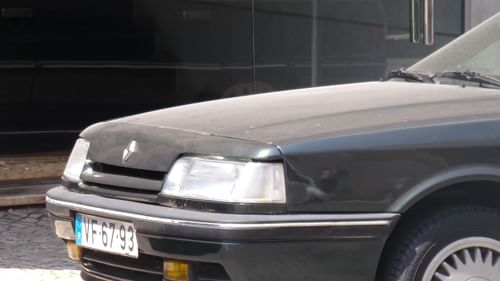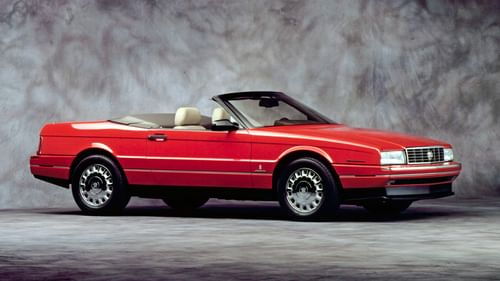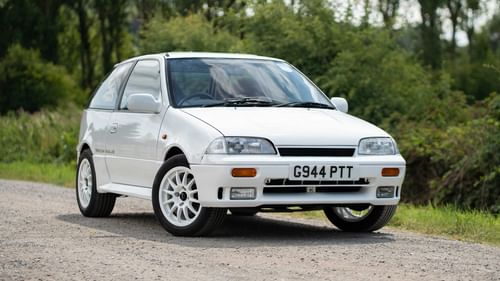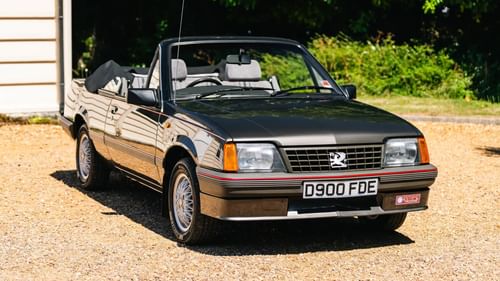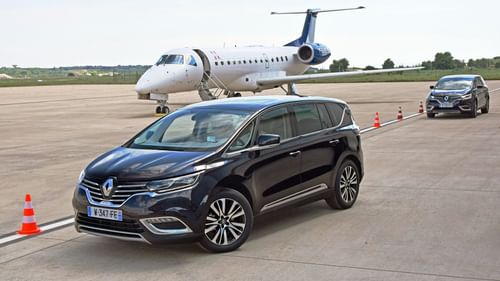
“That’s a Saab 99 Turbo, isn’t it? What is it, 150bhp?” I’m paraphrasing a little, because I’m too busy staring at the Holstein-Friesian-inspired black decals on the front of the guy’s white Toyota Estima to register every word. Milking the opportunity, he speaks about his fondness for Saab, before exiting the layby, possibly heading home to put the cattle on.
“Do you want to hear my horn?” he enquires before leaving, which isn’t something you want to be asked when parked by the side of the road in the Peak District. Predictably, it makes the sound of a cow, at which point I’m kicking myself for not recording the entire episode for posterity – and, who knows, possibly evidence in court. Anyway, moo-ving on.
It would have taken more than a bovine seven-seater to upstage Saab’s turbocharged pioneer at the 1977 Frankfurt motor show. For nearly a decade, the Saab 99 had cemented a reputation for being a safe, comfortable and unassuming family car. Sure, it had introduced us to headlight wipers, shock-absorbing bumpers and a heated driver’s seat, but everything pointed to the 99 slipping into retirement with grace and dignity, with the 900 tasked with rejuvenating a tired brand, propped up by an ageing product range. In 1980, The Motor said: ‘Three years ago the outlook for Saab’s operation, based on a respected range of ageing middleweights, was far from promising. Sales were depressed, dealer morale low. Then came the Turbo, bravely showing the way ahead.’ UK sales rocketed from 4000 in 1977 to an apt 9000 in 1979, and by July 1980, some 30,000 turbocharged 99s and 900s had been built. Turbocharging was to Saab what four-wheel drive was to Audi; new and exciting technologies that would underpin their operations for an entire decade.
Like Audi and the Quattro, Saab ushered in the new era with an eponymous model. The launch materials for the Saab Turbo make no reference to its model parentage – the car even left the factory without 99 badges. Things would change when the uppercase TURBO badges were replaced by lowercase 99 turbo badging, but there was something definitive about the Saab Turbo name. As if this was the turbocharged car. In many ways, it was.
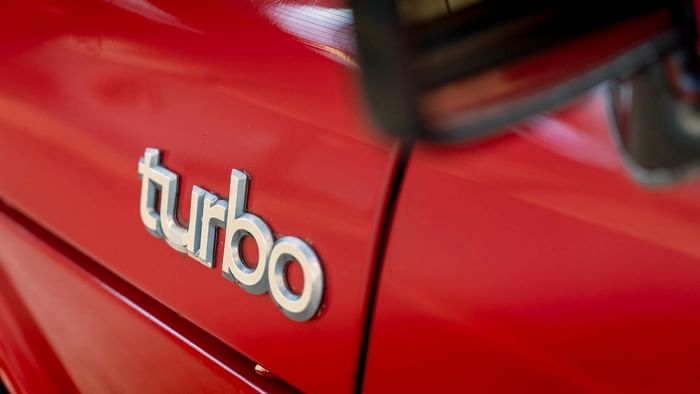
The launch of a performance 99 wasn’t entirely unexpected. From the outset, Saab toyed with the idea of fitting a V8, having ruled out several options prior to the collaboration with Triumph. A few 99s were fitted with Stag V8 engines, with one car even progressing as far as winter testing. Another was powered by a Rover V8, but Saab felt that the demand for big-engined family cars would fall, so the plans were dropped.
Continuing with a two-stroke unit was never given serious consideration, neither was the fitment of a flat-four. A V4 was ruled out on the grounds of it creating too high a bonnet line for Sixten Sason’s designs for the car, while the fitment of a rotary engine made it as far as a group of German consultants visiting Sweden for talks. Saab pulled out amid concerns about lubrication and sealing, with Rolf Mellde, one of the company’s founding fathers, reportedly labelling it one of the trickiest decisions he had to make. Tricky, but as NSU would discover with its struggles with Wankel, this was a bullet dodged.
Having decided that a four-cylinder engine was the way forward, Saab contacted Ricardo & Co Engineering, which coincidentally was developing a new engine for Standard-Triumph. The result was the development of a 1709cc slant-four overhead cam engine, built in Britain and shipped to Sweden. In 1972, the engine was bored out to 1854cc (as fitted to the Triumph Dolomite), with electronic fuel injection fitted to some models. Having labelled the original engine ‘slightly underpowered’, Autocar called the 1854cc unit ‘respectably quick even though it doesn’t always seem so’. The mag also previewed a new EMS (Electronic Manual Special), which hinted at a new, sportier 99. Its Swedish-built 1985cc engine was a development of the Ricardo-Saab-Triumph unit and produced a respectable 110bhp (later increased to 118bhp). In a 1975 test against the Dolomite Sprint and Alfa Romeo Alfetta 1750, Autocar called the 99 EMS a ‘wonderfully efficient machine’, but bemoaned the fact that the ‘Sprint’s engine could not have found its way into a car with dynamic qualities equal to those of the Alfetta or Saab’. Still, Saab had something else up its sleeve; performance car development is a marathon, not a Sprint, said nobody ever.
This is a deliberately truncated story of the 99’s life prior to turbocharging – the development story is compelling enough to devote an entire magazine to the subject – but it’s worth remembering that the 99 wasn’t born with turbocharging in mind. Saab knew it needed a bigger engine to raise its profile and appeal to aspirational buyers, but six- and eight-cylinder units were rejected from the outset. Saab predicted a fall in demand for big-engined cars, but the fuel crisis of 1973 and 1974 convinced the company that turbocharging could be the answer.
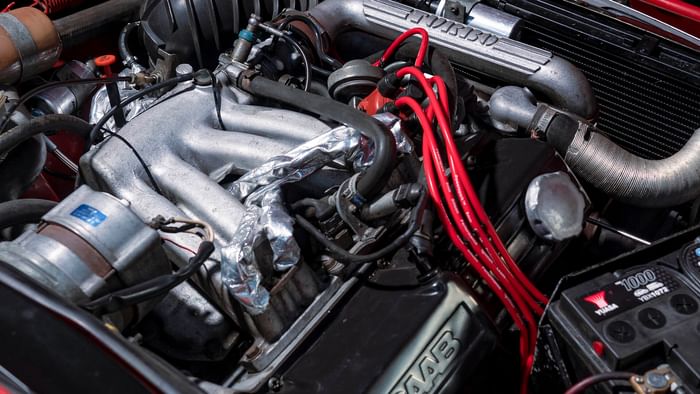
Turbocharging wasn’t a new thing – the tech was used on the short-lived Oldsmobile F-85 Jetfire and Chevrolet Corvair Monza Spyder in the 1960s. Saab even fitted a turbo to the 96 V4 for use in rallycross, but turbocharging had no role to play beyond the realms of the commercial sector and motor sport. The launch of the BMW 2002 Turbo did little to change that. Unveiled at the 1973 Frankfurt motor show, before going on sale in left-hand drive only guise in 1974, the blown 2002 was everything Saab didn’t want its 99 to be. Yes, it was quick – the 2002 Turbo could hit 60mph in around seven seconds and reach a top speed of 130mph – but the BMW was essentially a race car for the road. Autocar claimed that it had no direct competitors, saying ‘one must go up as far as the Porsche 911S before finding one [a 911] that is appreciably quicker than the 2002 turbo’. As a sidenote, Porsche unveiled the 911 Turbo in prototype form at the 1973 Paris motor show.
Four years later, the Saab Turbo arrived as the world’s first mass-produced turbocharged car. In typical Saab style, the car was subjected to a rigorous and thorough testing programme before it was unleased to the public. High-speed tests in Germany; winter driving in Canada at temperatures as low as minus 40 degrees; high-altitude tests in the Rocky Mountains; mountain passes of 2000 metres, fully loaded while towing a caravan; and a thorough workout at the hands of Stig Blomqvist and Per Eklund. In total, the test cars completed 1.5 million miles – the equivalent of 37.5 times around the world. Saab even lent test cars to private motorists and professional drivers in Sweden, Finland, Germany, Switzerland and USA. The company was taking a punt on the future being turbocharged, but its pre-launch efforts ensured that this was no gamble.
Visually, there was little to distinguish the Turbo from other 99 models in the range. A rear spoiler, rectangular driving lights at the front, square fog lights at the back, bespoke ‘Inca’ alloys and a turbo gauge on the dashboard, along with TURBO badges on the grille, edges of the clamshell bonnet and boot lid, were the only visual clues that this was a pioneering Swede. Things were different under the bonnet, but Saab didn’t have to do a great deal to the engine, with the block, crankshaft, bearings and conrods all remaining as standard. Changes extended to modified inlet valves, sodium-filled exhaust valves, milder camshaft to alter the timing, oil cooler, larger exhaust system bore and a larger radiator. Oh, and the fitment of a Garrett turbocharger the size of an alternator. Crucially, Saab developed its own charging pressure valve, more commonly known as a wastegate, designed to provide a boost at low engine speeds. Saab wanted torque where it mattered to most motorists: at low speeds and when overtaking. Thanks to a turbocharger that began to deliver the goods at just 1500rpm, the Saab Turbo could hit 62mph in 8.9 seconds before reaching a top speed of 122mph. The acceleration to match a Ford Capri 3.0 and a top speed similar to the Rover 3500. ‘These are impressive figures,’ Saab said, ‘although perhaps slightly theoretical. After all, we hardly ever use the power resources in this way, not even on the German Autobahn.’ How very Saab. Per Gillbrand was the automotive engineer we must thank for controlling the boost pressure. He said: ‘All engines have an oil pump, a fuel pump and a water pump. So why not an air pump, which is all a turbo really is? I think it’s odd that all engines don’t have one.’ He had a point.
Autocar was impressed, saying: ‘Very occasionally a car comes along which shocks the seen-it-all, driven-them-all staff of Autocar out of our collective complacency. A car which is not simply fast – we’ve seen those come and go – but one which is so unexpected, so unpredictably thrilling that the adrenalin starts to course again even in our hardened arteries. Such a car is Saab’s Turbo. It’s fast, but not the quickest car we have tested, and it’s certainly not one of the best-looking. But we will remember it long after many of the elegant exotica have faded from our minds. For it is such a surprising package, full of interest and excitement.’ A remarkable assessment for a car for which the first sketches were penned in the 1950s, the project (Gudmund) started in 1965, and launched in 1968 as a comfortable and safe family car.
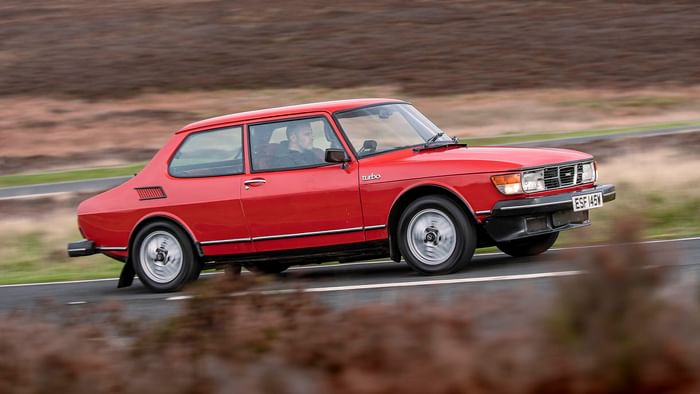
The Turbo arrived in 1978 as a three-door Combi Coupé, before it was joined in 1979 by a two-door saloon for Group One homologation purposes. Although not initially available in the UK, the two-door version came to the UK as a batch of 200, with a further 400 commissioned due to demand. Thanks to a shorter and lighter body, the two-door 99 Turbo, which was fitted with improved suspension from the 900, was quicker to 60mph, completing the sprint in 8.2 seconds. Motor called it a ‘superb performance car at an extremely attractive price… no other car at the price offers such a good blend of performance, handling, accommodation and value for money.’ That price was just £7940, or £31,000 in today’s money.
In 1980, CAR pitched the 99 Turbo against the Alfa Romeo GTV 2000 and BMW 323i. The German won the test, but only by a whisker. ‘For the ultimate in go and grip, the Saab is a decisive winner. Yet the BMW’s agility and sharper low-speed pickup could swing the verdict the other way, especially for many image-conscious buyers.’
Not everyone was charmed by the six-pot from Munich. Alistair Gregory’s father drove one in period but sold it because it made his other son sick. It’s something he’s never forgiven his brother for and is a primary reason why he was so keen to source one just like his father’s Saab in order to, in his words “relive the good old days”. That’s Saab ownership, rather than watching a family member add an unwelcome layer of vomit to the 99 Turbo’s glorious Bordeaux red upholstery. In fairness to his brother, not everyone would have expected such an unassuming family soon to go quite that quick.
Alistair is a proper enthusiast. His choice of transport for the school run is a Land Rover 101 Forward Control ambulance and his employees are given access to his Karmann Ghia and ex-British Army Mini Van for work duties. He demonstrates the Forward Control’s siren, unaware that he’s about to be upstaged by a chap in an imported Toyota.
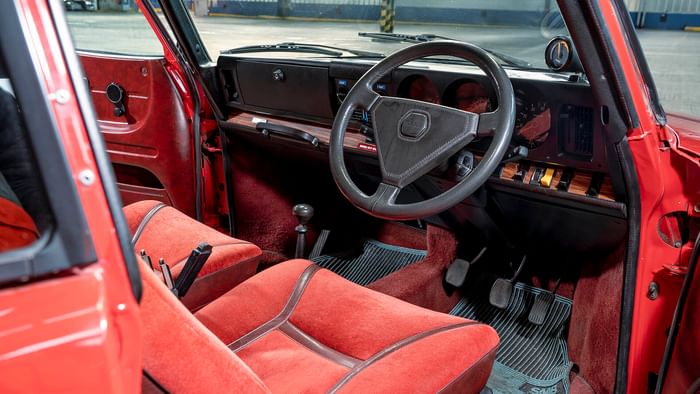
As someone who grew up with Saabs – my father owned a 99, four 900s and a couple of 96s – the 99 Turbo is wonderfully familiar. It’s the little things, like the reassuringly weighty door handles, the curved windscreen, the smell of the velour, the shape of the window winders and the clunk of the door shutting. I’m sure Alistair will be quick to remind me that I didn’t always close the driver’s door fully, so don’t look too closely at Simon’s brilliant photos from our drive on some of the Peak District’s finest roads.
Trying my best to avoid the inevitable aviation clichés, I complete the pre-flight checks before take-off. Insert the key in the ignition – placed between the seats to protect the driver’s knee in the event of a collision – twist it to the right, take the car out of reverse, then fire up the engine. ‘FASTEN SEAT BELTS’ is emblazoned on the dashboard, so I buckle up using a holster that looks straight out of a cockpit. Doors to manual and… no, I promised to leave the aircraft clichés on the runway.
The cockpit, sorry, cabin feels compact by today’s standards, but not small. The driving position is odd, with the pedals offset to the left and the steering wheel slanted to the right. The turbo gauge, perched on the right-hand side of the dashboard is the only clue that I’m driving something special, because the interior is otherwise standard 99 fare. Three cowled dials sit to the right of three circular controls labelled ‘DEFR’, ‘TEMP’ and ‘VENT’. There’s a logic to the layout and a sense of longevity that you don’t always find in cars of this era. The passenger grab handle below the glovebox serves a new purpose in the 99 Turbo; hold on tight, folks, we may experience a little turbulence.
It's a Saab, so you don’t need me to tell you how comfortable it is. It means that I’m slightly less uncomfortable with the prospect of spending the first couple of miles sharing the road with the learner drivers tentatively tackling the Chesterfield driving test route. Testing the impact-absorbing bumpers isn’t part of the plan. I’m struck by how modern it feels. It wears its 108,000 miles extremely well and it doesn’t feel like a car that has celebrated 40 years and counting. Saab’s cars always were ahead of their time – the world still hasn’t caught up with them.
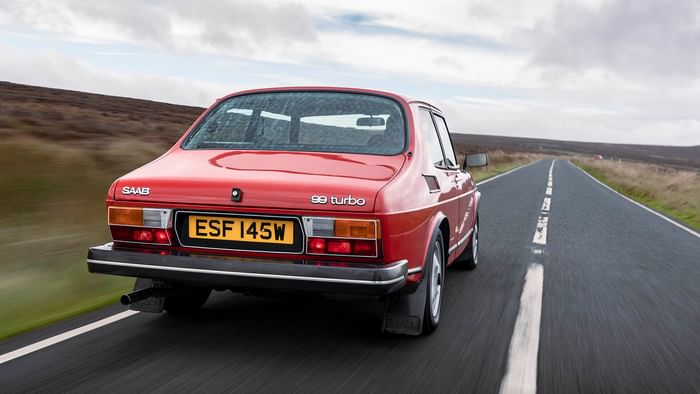
Exiting the urban sprawl, the Dronfield bypass is my first opportunity to stretch the car’s legs. The power doesn’t arrive instantaneously. Instead, the performance builds gently, like a drumroll giving way to an orchestral overture. Autocar likened it to ‘a roller coaster running downhill… the Saab just gets faster and faster as the turbocharger boost increases’. I can’t think of a better way to describe it and I’m grinning even before I’ve selected third gear. I was expecting epic turbo lag, but there’s nothing of the sort, just a momentary pause giving way to a smooth and continuous surge before the engine hits peak power at 5000rpm. It’s amazing how much fun you can have with ‘just’ 145bhp at your disposal.
The Saab is longer than a modern Ford Focus, but significantly narrower, which makes it easy to navigate the tight bends on the roads of the Peak District. My size 11s are too big for the pedals, but this doesn’t prevent me from enjoying what must have been a revelation at the end of the 1970s. It feels more like a hot hatch than a family saloon, with a slick four-speed gearbox, wonderfully weighted rack-and-pinion steering and that intoxicating burst of power when the turbo kicks in. The handling is the biggest surprise, with the car feeling unruffled, even on the tightest of bends. There’s so much grip and no sense that the front wheels are being overwhelmed by the power. Even on roads ravaged by recent storms, the Saab never loses its composure; you’d need a track and a more talented driver to exploit its full potential. Get too carried away, and the all-round disc brakes are on hand to calm things down.
It does everything with a sense of serenity and calmness; some performance cars feel unhinged and unpredictable, but the 99 Turbo gives you an overwhelming sense that everything will be okay. One minute you’re playing with something racy and provocative, the next minute you’re slipping into something more comfortable for the journey home. From dogfight to business class in the blink of an eye.
Udder Saabs are available, but the 99 Turbo is the most iconic – we’ll be lauding it as a performance icon until the cows come home.
This article first appeared in issue 19 of Classic.Retro.Modern. magazine. Photos by Simon Thompson.
